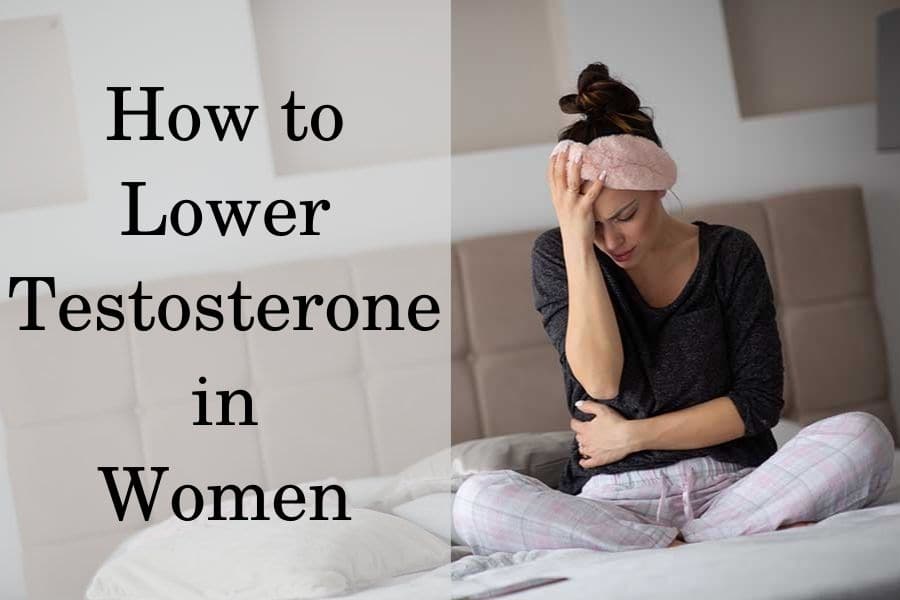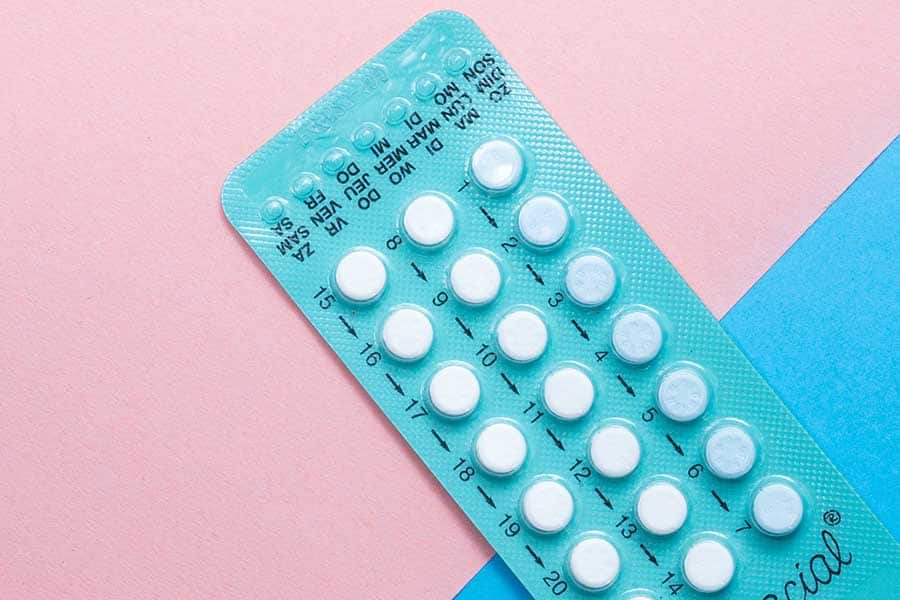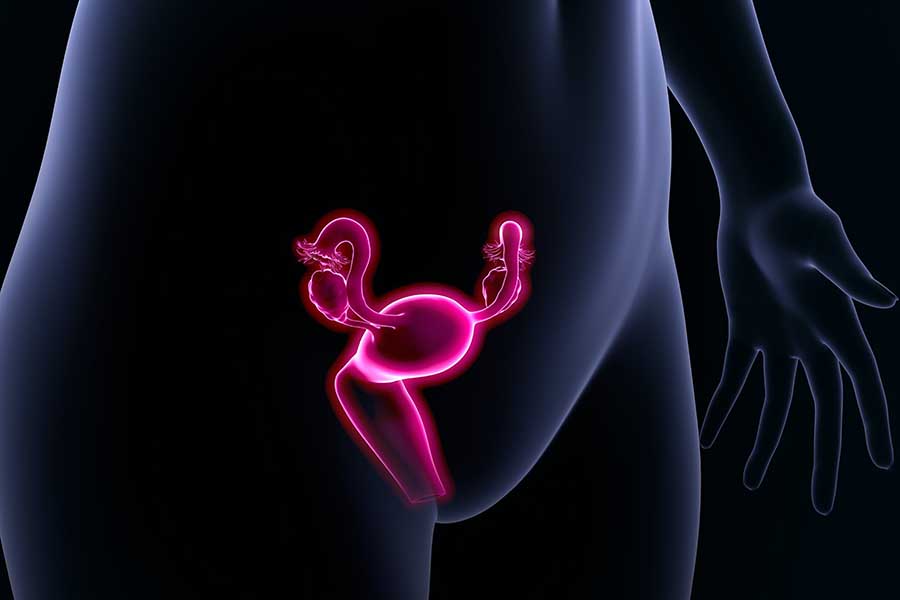Despite the fact that testosterone is the male sex hormone, it is also present in the female body. In women, it is naturally produced by the ovaries and adrenal glands.
In a woman, normal levels of testosterone should be about 20 times lower than those in men or more specifically in the range of 8-60 ng/dL (80-600 pg/ml).
If there is too much testosterone in your body, it can lead to virilization. That’s the development of male physical characteristics such as a deeper voice, excess body hair, and male-pattern baldness. Hyperandrogenism (excess T) can also lead to severe psychological complications.
Nevertheless, testosterone plays an important role in the female organism by supporting the function of your reproductive organs, sexual desire, and bone mineral density.
Therefore it’s important to maintain healthy T levels in your body.
Do not use any of the treatment options mentioned in this article without medical consultation and supervision
Also, these methods of lowering testosterone levels are not appropriate for over-the-counter use or therapy in male-to-female patients.
Currently, the treatment for hyperandrogenism depends on the main cause of the condition but in general, successful management may require lifestyle changes, medications, and cosmetic therapies.
How to lower testosterone in women
The treatment of high T in women depends on the underlying condition. The main therapeutic methods used to reduce testosterone levels include medication therapy and lifestyle change.
In addition, local treatments such as laser hair removal and other cosmetic methods may help.
Unfortunately, both lifestyle changes and medications take at least several months until there is any noticeable benefit
For example, PCOS is usually treated with low doses of estrogen-based oral contraceptives and metformin. Research reveals that it takes up to 3-6 months of therapy with low-dose contraceptive therapy until T levels return back to normal.
Those who would like to remain fertile are also candidates for metformin. Ovulatory function improves within 6 weeks of metformin therapy, while the rate of pregnancies increases within 4 months.
How to treat high testosterone naturally
Successful management requires long-term treatment, and unless a lifestyle intervention is successful, then you may have to stay on treatment all your life.
Increase physical activity
Lifestyle changes can be effective to treat high testosterone in a woman naturally in cases when high T is related to hyperinsulinemia and insulin resistance.
Weight loss is recommended as a first step in the treatment of overweight or obese women with PCOS.
Reducing body weight by as little as 5-10% can significantly improve insulin sensitivity and dramatically reduce reproductive, metabolic, and psychological symptoms of PCOS.
Scientists report that increased physical activity is one of the most successful methods to improve insulin sensitivity in PCOS patients.
Furthermore, several foods contain anti-androgenic ingredients that may help to lower testosterone levels in females with hyperandrogenism and PCOS.
Foods that lower testosterone
For example, one trial in 42 women revealed that drinking spearmint tea every day for 1 month led to a significant reduction in testosterone.
Another herb that is shown to lower T levels in women is licorice. Daily supplementation is able to reduce testosterone levels by more than 30%.
Whole grains and citrus fruits are great sources of inositol. When used as a supplement, inositol can improve insulin sensitivity, suppress symptoms, and increase fertility in PCOS.
Besides, sources of polyunsaturated fatty acids such as Omega-3 may also help reduce testosterone levels in the female body. One trial reported that daily walnut and almond consumption is able to increase SHBG levels by up to 16% in women with PCOS. Another popular plant source of Omega-3s, flaxseed oil, may also be effective in decreasing T levels.
4 drugs that lower testosterone
According to official guidelines, low-dose estrogen-based birth control medications are the most suitable medication therapy for patients with hyperandrogenism, including those with PCOS, CAH, and menopausal women.
The contraceptives should contain only less-androgenic progestins such as norgestimate are most suitable. Other progestogens are generally considered not suitable as they have more potent androgenic rather than anti-androgenic effects.
Oral contraceptives
Oral contraceptives work by increasing SHBG levels, which binds and deactivates testosterone. Contraindications against their use include the desire for pregnancy, in which cases, metformin can be used instead as a monotherapy.
Metformin
Metformin is a first-line medication used in type 2 diabetes. It effectively reduces insulin resistance while at the same time it possesses a highly favorable safety profile.
Also, metformin is highly effective in restoring ovulatory function in women with PCOS. Yet, successful management in certain cases may require a combination of metformin and contraceptives.
Antiandrogens
Another group of options includes antiandrogens such as cyproterone acetate, flutamide, and spironolactone. They counteract the effects of testosterone such as hirsutism, acne, balding, virilization, etc.
Unfortunately, response to antiandrogens is slow and may take up to 18 months. Besides, they have a higher risk of side effects compared to other options of lowering testosterone in women.
An optimal therapy duration has not yet been established, but discontinuing their use leads to symptom recurrence.
Glucocorticoids
In addition to the standard therapeutic methods, patients with CAH also require lifelong therapy with glucocorticoids. That is in order to compensate for the low cortisol production which also helps suppress the corresponding increase in androgens.
What causes increased T levels in women?
Medical conditions that can cause high testosterone in women are:
- Conditions related to hyperinsulinemia such as polycystic ovary syndrome (PCOS), hyperthecosis, etc.
- Cushing’s syndrome
- Hypothyroidism
- Congenital adrenal hyperplasia (CAH)
- Menopause
- Tumors
- Medications
The most common cause of high T levels in women is polycystic ovary syndrome. The hallmark of the condition is an increased production of testosterone by the ovaries.
The exact cause of PCOS is unknown but most scientists think it develops due to a combination of genetic factors, insulin resistance, and high insulin levels (hyperinsulinemia).
The excess of insulin affects T levels both directly by stimulating the production of T by the ovaries and indirectly via the sex hormone-binding globulin (SHBG). SHBG normally binds T and renders it inactive. Hyperinsulinemia decreases the levels of SHBG and increases the activity of testosterone in the female body.
Insulin excess and insulin resistance can also cause an overgrowth of the cells in the ovaries that produce testosterone, which are called luteinized theca cells. This leads to a condition called hyperthecosis and even higher T levels compared to PCOS.
Other endocrinological conditions that may cause an increase in T levels in women include Cushing’s syndrome and hypothyroidism. While in men, too much testosterone can lead to ED and other negative effects cardiovascular system.
Menopause generally leads to a decrease in both estrogen and T levels, although transient testosterone increases have been observed during the menopausal transition.
However, estrogen levels usually drop faster than testosterone which leads to a prevalence of T effects on the female body and symptoms of hyperandrogenism.
Fortunately, the effects are transitory and do not require lifelong treatment
In contrast, CAH is a condition that’s present from birth and persists for the rest of the patient’s life.
It is caused by a dysfunction of the adrenal glands which can no longer produce cortisol. This leads to their overgrowth as an attempt to compensate and an increased production of other adrenal hormones such as androgens.
Stress is unlikely to cause excess testosterone in females. There is huge variability when it comes to individual stress reactions and both significant increases and decreases in testosterone have been found.
Hyperandrogenism can also be drug-induced such as during androgenic anabolic steroids misuse. Androgens such as Danazol have also been used for therapy in endometriosis and other conditions and their main side effect is virilization.
Currently, the use of testosterone therapy can cause side effects in women when serum T levels exceed normal values.
Signs and symptoms of high testosterone in females
The most common signs and symptoms of high T in women are:
- irregular or absent menstruation and infertility
- male-pattern body and facial hair growth (hirsutism)
- thinning hair and balding
- acne and oily skin
- deepening of the voice
- changes in libido
- mood changes, anxiety, and depression
- enlargement of the clitoris
If the condition is caused by high insulin, such as in PCOS, obesity is also a common finding. According to research, about 80% of PCOS patients are obese.
High levels of insulin resistance are also common in these patients which leads to high insulin levels and an increased risk of type 2 diabetes.
Some of the symptoms such as acne, hirsutism, and hair loss can also trigger psychological symptoms such as depression and anxiety.
Elevated testosterone levels in women also show a small positive correlation with increased aggression.
Unfortunately, some of the symptoms such as deeper voice, advanced alopecia, and larger clitoris are irreversible.
How high testosterone is diagnosed?
In order to get a proper diagnosis, you should visit a licensed medical professional. Depending on the exact cause of high T, it may be best to visit a specialist in endocrinology or gynecology.
According to the American Association of Clinical Endocrinologists, the initial diagnosis of high T in women should begin with a medical history and physical exam.
Furthermore, your doctor will check your family history since many of the medical conditions that can cause hyperandrogenism may also be inheritable.
Eventually, you will be assigned a blood test that will evaluate several of your hormones, including your testosterone, luteinizing hormone, follicle-stimulating hormone, prolactin, and others.
Normal total T levels in adult women should be in the range of 8-60 ng/dL, while free T levels should be within 0.06-1 ng/dL.
Get a free consultation with our medical expert for any questions about hormone replacement therapy




